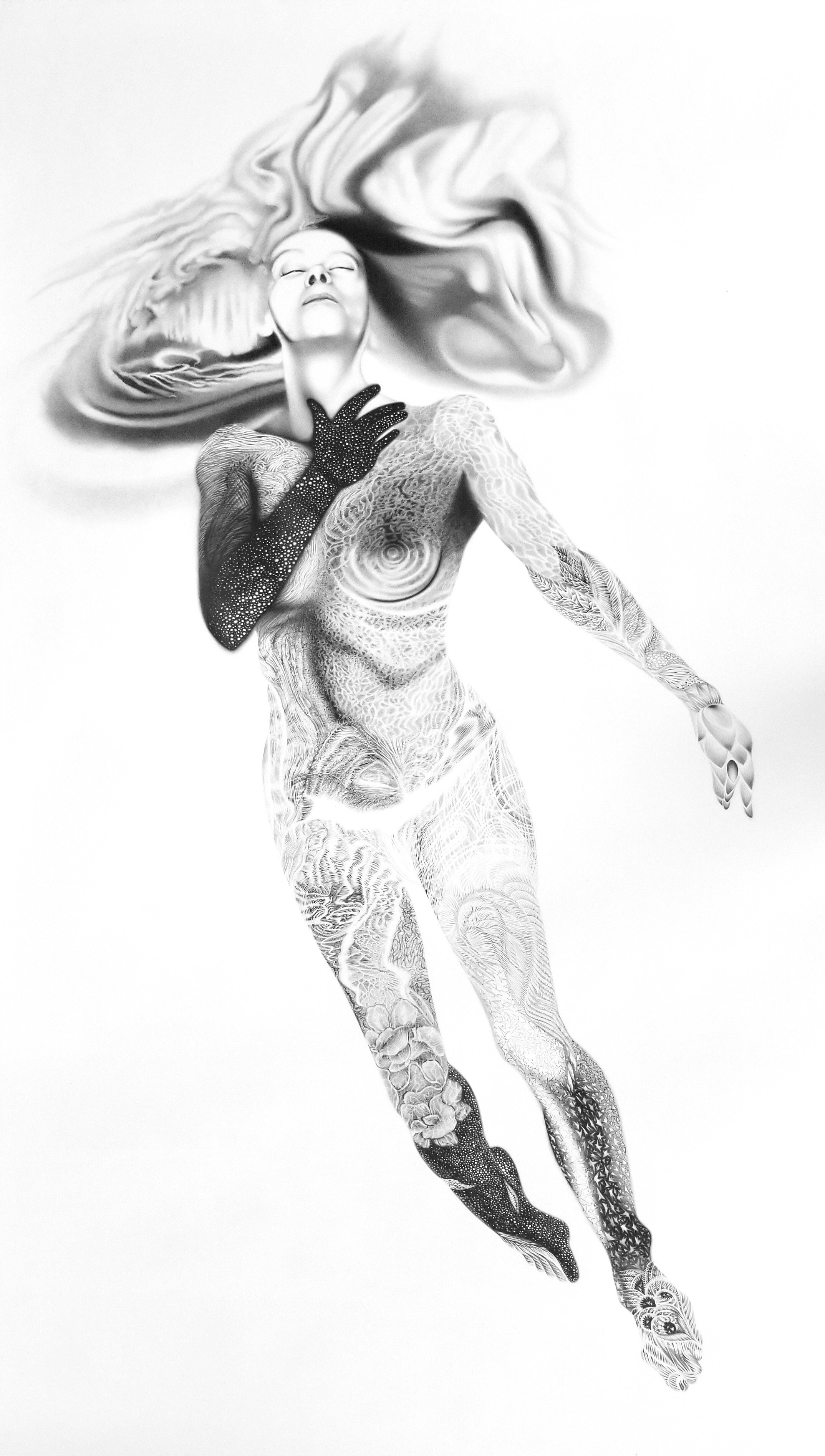Step-By-Step Guide to Creating Your First NFT
Just 4 days ago, NCB News headlined that the NFT (non-fungible token) art market is booming with sales closely reaching $25 billion last year alone compared to $94.9 million the year before. 41-year-old Digital illustrator, Mike Winkelmann, better known as, Beeple auctioned off his digital artworks in the form of an NFT for an astounding $69.3 million, becoming the most expensive NFTs to date. So, if you’re an artist ready to start your new venture in this vibrant, expanding market, you’ve come to the right place! We’ll show you exactly what steps to take in order to create your first successful NFT alongside any foreseeable costs. Let’s get into it.
Step 1: Select an artwork
The first place to start is with selecting the artwork that you would like to convert into an NFT. Non-fungible tokens are so versatile that they can be formed from any digital file so your options are vast. Here are a few ideas from which you can start but remember that it’s not limited to the ones we’ve highlighted - digital painting, illustration, photography, a video, a music file, a text file etc. As described perfectly by Domus, a magazine for architecture, design and art lovers, “the NFT game is all about turning digital artwork into “unique” pieces in the age of their infinite reproduction”.
The Girl in the Red Cloak //Photography// by 5th Edition Finalist, Charli Savage
Step 2: Choose a blockchain for your NFT
Now it’s time to start the process of minting your NFT. Minting refers to the actual conversion of your item artwork into a digital asset/NFT that can be bought with cryptocurrency and it’s also how your digital art becomes a part of a blockchain system. In the first stage of this process, you want to choose a blockchain for your NFT. Simply put, a blockchain is essentially a form of digital leger or a system of recording information that is “duplicated and distributed across the entire network of computer systems on the blockchain” making it extremely difficult to hack, alter or cheat the system, in turn enhancing online security.
Making an informed decision about the blockchain you use (based on your requirements) is an important step in creating your first NFT. To save you time and worries, we’ve compiled a list of things you should consider when choosing a blockchain that suits your needs best as well as a list of reputable blockchain systems,
Considerations when choosing a blockchain
Will you be using a public or private network?
Public networks can be accessed by anyone on the internet and anyone can run a node on them. They also require you to make a payment in cryptocurrency to run applications or make transactions on the network. Conor Svensson, Founder and CEO of Web3 Labs, a trusted and experienced blockchain technology provider describes that “the big perk of public networks is that the infrastructure already exists so you’re only building on top of it, which can be cheaper at first as you only need to be able to access a node. However, you cannot exert any control yourself on the network which means that any bottlenecks due to high usage will throttle your applications’ performance as well. Additionally, you need to buy that platform’s cryptocurrency to be able to use it which is simply not an option for a number of organizations”.
Meanwhile, private networks are run by consortia which is an association of two or more financiers, companies, organizations or governments who have the shared objective of pooling their resources or engaging in a mutual activity to achieve a common goal. Svensson further explains that private networks are typically known for “supporting greater performance, finer grained permissioning and more privacy options than their public counterparts” these being key contributing factors as to why most people start with a private network. He continues by stating that “given their consortia-driven nature, they [private networks] often align with a specific industry or niche. As its name implies, a private blockchain keeps all the information on the ledger private among participants; it is not visible out of the consortia (unlike public blockchains)”.
2. Research the credibility and the expertise of blockchain consultancies and technology companies
Whether you’re reaching out to a blockchain consultancy to assist you in the process or you’re reviewing blockchain technology companies on your own, always carry out your own research on the credibility and expertise of both parties. When you’re reading articles or writeups on these parties, take note of the author and their position or affiliation to the parties to ensure that they are not providing a bias report. A background check on LinkedIn won’t ever hurt you. In your research, also review the niches that these parties have experience in to see if it fits your requirements and goals. Finally, you can equally make use of third party reviews on sites such as Bitcoitalk, GitHub, Clutch and other platforms to see the views, experiences and opinions of real users.
Popular, reputable blockchain systems (recommended by Conor, Founder of blockchain, Web3 Labs)
Bitcoin - public network
Ethereum - public network
Ethereum - Quorum and Hyperledger Besu - private and permissioned network (used by companies such as BMW, Microsoft, General Electric and others)
Hyperledger Fabric - private and permissioned network (created by leading American computer manufacturer and multinational technology coporation, IBM : International Business Machines. Used by companies such as HSBC, Dole Foods, China Construction Bank and others)
Corda - private and permissioned network (created by R3, a consortium of banks focusing on blockchain solutions. Used by HSBC, ING Group, Credit Suisse, Aon, Daimler and others).
Remember that these are only recommendations and at no point are you obligated to follow them. Ensure you carry out research to make the most informed and best decision for you. You can also check out Forbes annual Blockchain 50 list which gives great insight into the platforms that are being used by leading companies. Also, check out Conor’s article on ‘How To Choose The Right Blockchain Technology’ where he debunks some common misconceptions surrounding blockchain platforms. As an artist, you want to put your privacy and permission regulations first to ensure your online safety in the market because you don’t want people to take your all of your hard work, uniqueness and ownership to be remade or stolen.
“Holly” //Oil on Canvas// by 5th Edition Finalist, Martin Murphy
Step 3: Choose a marketplace
Now you’re ready to find a marketplace to list your digital asset for sale. There are numerous popular platforms designed to allow users to create, distribute, buy, sell and trade digital files on the blockchain through Non-Fungible Tokens (NFTs) such as OpenSea.
However, the rapid growth of NFT platforms such as OpeanSea has created the threat of piracy and fraud. In an article by NBC News, they outline the threat to artists and other creatives on various NFT marketplaces - “While that’s [users’ ability to createan account with ease and start selling virtually any item] helped OpenSea grow rapidly, the platform is barely moderated, forcing artists to actively patrol OpenSea and its competitors to try to get their work taken down.”
Therefore, in the process of choosing a marketplace, you want to ensure you take the time to thoroughly vet the platform as a means of minimizing the risk of theft and fraud. DeviantArt, one of the internet’s largest digital art platforms, actually scans blockchains used by NFTs and alerts users when their work has unlawfully been duplicated or copied on NFT exchanges. As an artist, in order to protect your work, you can send copyright notices to NFT marketplaces and Ashli Weiss, a Silicon Valley lawyer has published a guide teaching artists how to do exactly that.
When choosing your ideal marketplace, you want to consider that each platform will have its own set of guidelines and instructions as well as its own advantages and disadvantages. Assess these aspects according to your needs. For example, the supported file types, the fees associated with each platform, the type of service the platform provides (ex. self-service vs curated), as well as the user experience. It’s also essential that you note is the type of users each site has before committing to one to know whether or not paying a higher fee may be more beneficial in the long wrong if it can increase your visibility and sale opportunities.
With the marketplace, you will set up a cryptocurrency currency wallet which is necessary for accessing different platforms, signing transactions and managing your balances. Examples of wallets include MetaMask, Coinbase Wallet, Fortmatic, and WalletConnect.
“Illuminated” //Drawing// by 5th Edition Finalist, Michele Benzamin-Miki
Step 4: Upload your file
You've selected your ideal marketplace and are ready for the next step of minting. Upload your file onto your chosen NFT marketplace. On their platform, they should have a step-by-step guide illustrating how to upload your file onto their platform typically in the format of a PNG, MP3, etc. Definitely, read through their guide before uploading as it will be filled with helpful information that will save you time.
“Arrival” //Oil on Canvas// by 5th Edition Finalist, Patricia Ortiz
Step 5: Set up a sales/ monetization process for your NFT
You’re nearly there, just one last thing to do. This specific process will be dependent on your chosen platform. Typically though, there are three main sales processes.
1) Sell at a set/fixed price - In this situation, it’s like a first come first serve system in which a collector purchases your NFT once they meet the set price.
2) Sell via a timed auction - In a timed auction, there is a bidding window or restricted time limit and the person who submits the highest offer during this time wins.
3) Sell via an unlimited auction - Contrary to a timed auction, an unlimited auction doesn't have a set timeframe or bidding window in which interested persons must submit their offer. Rather, you can dictate when the duration of the auction and end it as you see fit.
And just like that your first NFT is created… but wait, now we’re going to give you a breakdown of any fees attached to this entire process.
“Lost & Found” //Oil on Linen// by 5th Edition Finalist, Raime Lee
Fees associated with creating/ minting an NFT
A gas fee - the fee that you have to pay in order to successfully carry out a transaction on an NFT platform. The gas fee can fluctuate depending on several factors such as the day on which you carry out a transaction. For example, this fee is drastically more on weekends as there is a higher demand for creating transactions during this period of time (i.e. more users are making transactions). A tip provided by Poster Grind is to wait until it’s the night before processing the NFT. They explain that “often, the number of fees you will need to pay will depend on how busy the network is. By staying up late, you should be able to reduce the number of transactions that are occurring”. They also suggest creating an NFT series i.e. one NFT with multiple editions and sell the editions individually as a means of lowering gas fees and make sure in order to cut down on gas fees, you’re choosing the right currency as there can be significant differences between each of them. Lastly, they stress that patience is indeed a virtue in this market because “if you need something urgently, the network will need to prioritize that task. In exchange, you will need to increase the gas fees.”
A site fee - You may incur a site fee for listing the NFT for sale. This will be dependent on the site you use because some sites do allow you to post for free; whereas, others will charge you. This fee can range from a very small amount to $900 in extreme cases.
Account set-up fees - This is site-dependent. For example, OpenSea and Rarible are free to join.
Sales fees - It is possible sometimes to mint tokens for free; however, when it comes to selling them, you are expected to pay. For example, OpenSea takes 2.5% of every final sale price.
But, I know we all like to save where we can so there are ways to mint for free. If you’re interested in exploring that option, look into ‘lazy minting’. Some sites (but not all) such as Rarible allow you to transfer the costs of minting and listing onto the buyer, meaning that you the seller avoid having to pay these fees.
Conclusion
Now that you know the steps to create your first NFT, it's time to take action. The market is waiting for your next big idea! So what are you waiting for? Create that first NFT today and make things happen!




